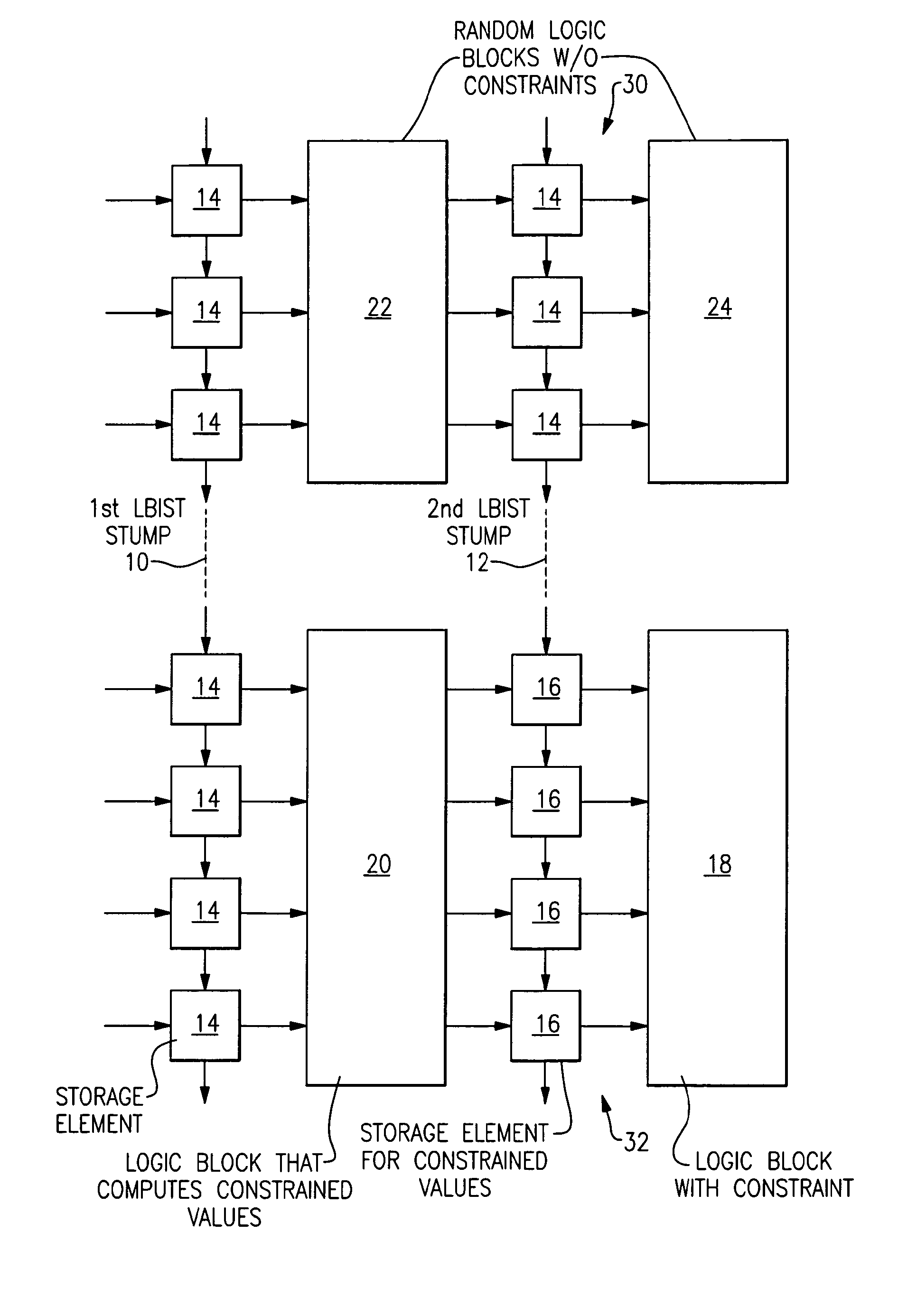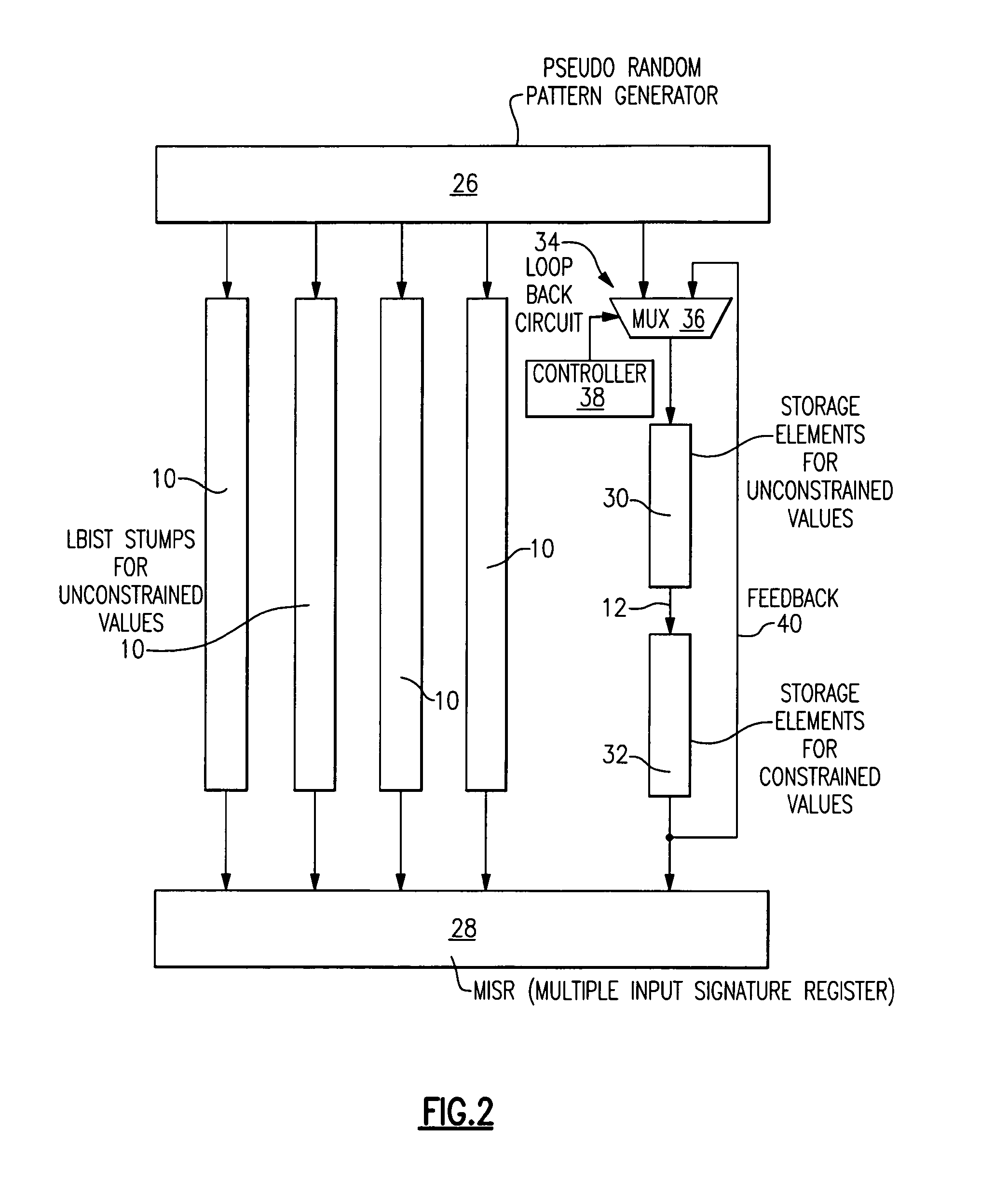Method for performing a logic built-in-self-test in an electronic circuit
a logic and electronic circuit technology, applied in the field of methods for performing logic built-in self-tests on electronic circuits, can solve problems such as slow and costly process
- Summary
- Abstract
- Description
- Claims
- Application Information
AI Technical Summary
Benefits of technology
Problems solved by technology
Method used
Image
Examples
Embodiment Construction
[0029]FIG. 1 illustrates a schematic diagram of a part of an integrated circuit with a logic built-in-self-test (LBIST) engine according to the present invention. The integrated circuit includes a first LBIST stump 10 and a second LBIST stump 12. The first LBIST stump 10 comprises a plurality of storage elements 14 for unconstrained values. The second LBIST stump 12 comprises a first portion 30 and a second portion 32. The first portion 30 of the second LBIST stump 12 includes a plurality of storage elements 14 for unconstrained values. The second portion 32 of the second LBIST stump 12 includes a plurality of storage elements 16 for constrained values. Thus, the second LBIST stump 12 comprises storage elements 14 for unconstrained values as well as storage elements 16 for constrained values. The first LBIST stump 10 comprises only storage elements 14 for unconstrained values in this embodiment.
[0030]The storage elements 14 and 16 are scan-able storage elements. Each storage element...
PUM
 Login to View More
Login to View More Abstract
Description
Claims
Application Information
 Login to View More
Login to View More - R&D
- Intellectual Property
- Life Sciences
- Materials
- Tech Scout
- Unparalleled Data Quality
- Higher Quality Content
- 60% Fewer Hallucinations
Browse by: Latest US Patents, China's latest patents, Technical Efficacy Thesaurus, Application Domain, Technology Topic, Popular Technical Reports.
© 2025 PatSnap. All rights reserved.Legal|Privacy policy|Modern Slavery Act Transparency Statement|Sitemap|About US| Contact US: help@patsnap.com



